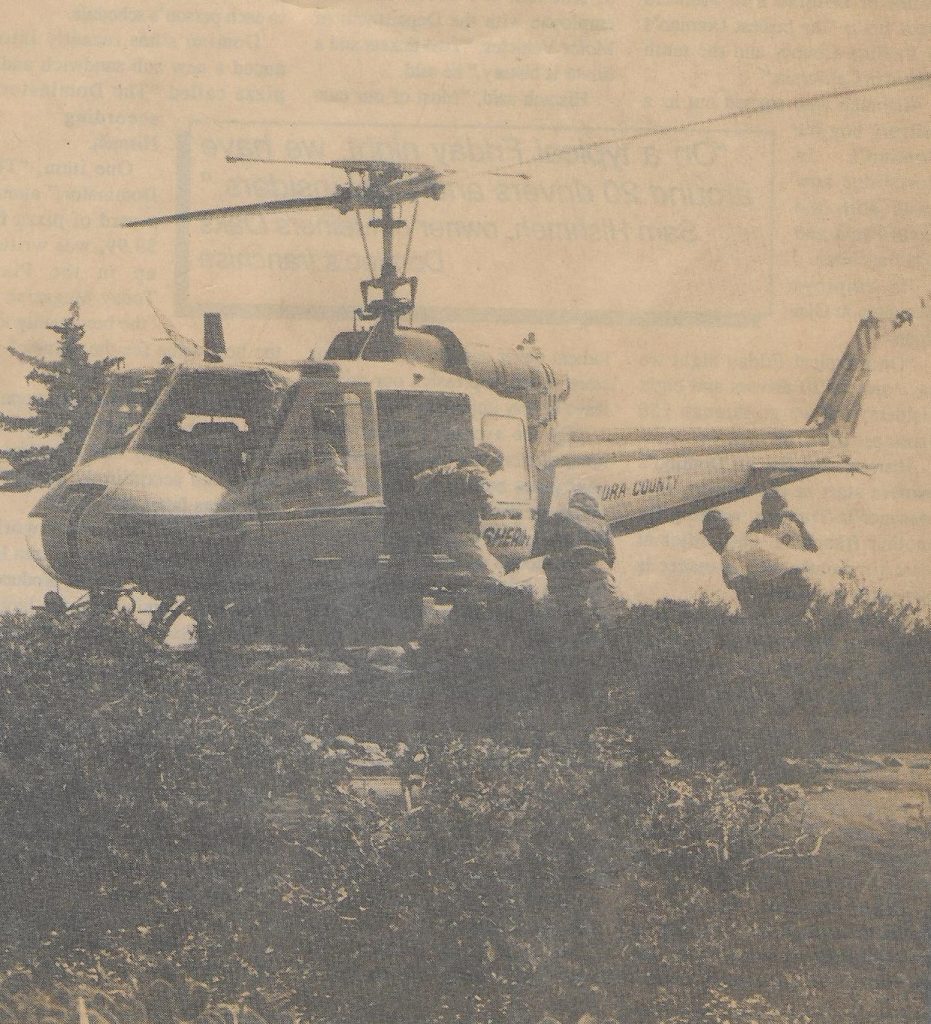The following article was first printed in the Wednesday, July 28, 1993 edition of the “Ojai Valley News” on Page A-1.
Hard work and no pay reward a vital job
By
Mike Palmer
Needed are a few good men, any age, any occupation (even attorneys or bankers), on-call 24 hours a day, must provide their own equipment and be willing to work for no pay at all hours of the day or night.
Add to these requirements months of training, an extensive background check, the need for a unanimous vote of 20 other team members to join and you have the requirements for membership in one of Ojai’s most select groups — The Upper Ojai Team of Ventura County Search and Rescue.
According to team member Tom Farmer, “You have to be 100 percent committed. You have to be ready to instantly drop what you are doing and go out on a rescue. It takes strong family support.”
He said the hours required of team members may vary from just a few to over 100 per month depending on need.
Farmer went on eight rescues during five months and participated in many training exercises before he was voted team membership, he said.
Any team member has a veto power regarding new members as does the Ventura County Sheriff’s Department.
The Upper Ojai Team is composed of different occupations. Some of these include a banker (Farmer), an attorney, a medical technician, a landscaper, several ranchers, an insurance broker and numerous others. Ages vary from 20 to 70 in the Upper Ojai Team.
Although the team is currently all male, it has had female members. All are welcome that can meet the rigorous physical requirements for membership, according to Farmer.
The team’s last rescue involved an 18-year-old woman, lost while hiking in Santa Paula Canyon. The search started at 9 p.m. and she was found at 2 a.m. the next day, he said.
Lost hikers, plane crashes and missing children are the most common call-outs, according to Farmer.
Although each of the three Ventura County Search and Rescue mountain teams are somewhat autonomous, they are under the over-all direction of the sheriff’s Lt. Arv Wells in Camarillo.
All calls for search and rescue in the back country go to Wells or his assistant, and they make the decision whether to call out one of the teams.
All team members carry beepers and equipment 24 hours a day, seven days a week, Farmer said.
Wells said, “Most calls come from various watch commanders around the county.
“Our decision to respond when a person is two hours overdue, depends on many factors. The age, back country experience and weather will control if an immediate response is indicated.
“If there is any doubt, we would rather respond and cancel a search after someone shows-up, rather than wait.”
Wells supervises eight search and rescue teams and three helicopter units county-wide.
In addition to three mountain teams, there is a search dog team, an underwater team, a medical team, a mounted posse and an administrative support team.
He said the 180 volunteers who comprise the eight teams save the county $500,000 annually. Wells said most team members provide all their own equipment and devote hundreds of hours to training and rescues, all for the “self-satisfaction of helping others in adverse conditions and some times saving lives.”
Farmer said he got involved after he witnessed first-hand the many hours devoted by the team when his son, Troy, was lost in the back country last December.
Although, Troy subsequently came out without help, Farmer said, “I learned to appreciate what a victim’s family goes through. That is when I decided that I wanted to help.”
Farmer said the Upper Ojai Team is selling t-shirts to help finance the purchase of some new equipment. Shirts may be purchased for $12 at the Ojai Valley Bank, 1207 Maricopa Highway, Ojai.

